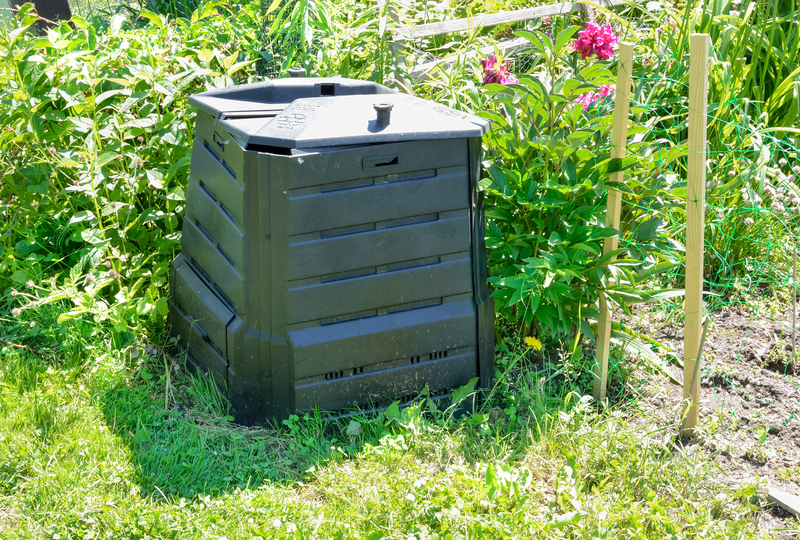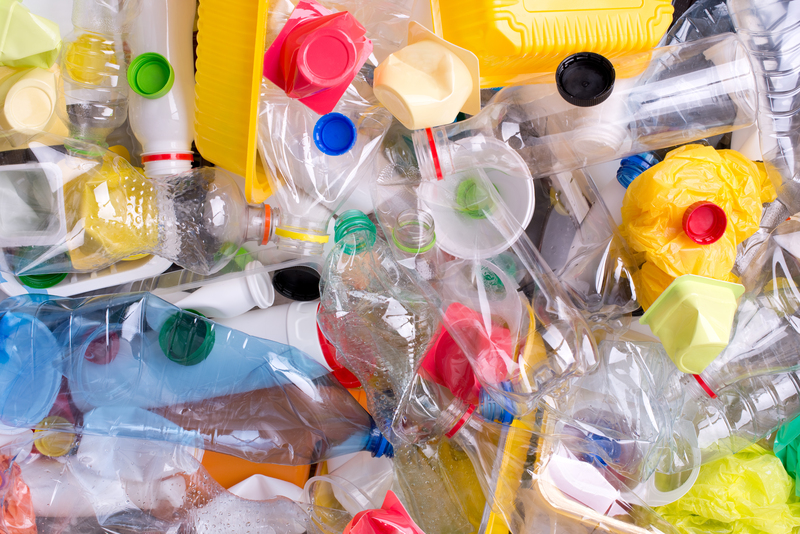Exploring Viable Solutions to Microplastic Woes
The ubiquity of plastics and their microscopic degradation products--microplastics--is now regarded as one of the world's most profound environmental threats. From the deepest ocean trenches to the air we breathe and even our food, microplastics have infiltrated every corner of our planet. This article delves into the growing problem of microplastics and explores viable solutions to address this pressing environmental crisis.
Understanding the Microplastic Problem
Microplastics are tiny plastic particles--typically smaller than 5mm in size--originating from a variety of sources. They result from the breakdown of larger plastic debris through processes such as UV radiation, weathering, and mechanical abrasion. They also directly enter the environment through products like cosmetics, detergents, and synthetic clothing fibers. The impact of microplastics on ecosystems and human health is a cause for alarm and demands immediate, well-informed action and policy innovation.
What Are Microplastics?
- Primary Microplastics: Manufactured to be small for use in products like microbeads in personal care items, or as industrial abrasives.
- Secondary Microplastics: Formed from the fragmentation of larger plastic items such as bottles, bags, and fishing nets.
Microplastics persist in the environment due to their durable polymeric structures, and are frequently consumed by marine life, birds, and even humans. Studies have found microplastics in drinking water, seafood, and even table salt. The scope of the microplastic pollution challenge underscores the urgency of identifying effective solutions.

Sources of Microplastic Pollution
- Personal Care and Cosmetic Products: Microbeads used for exfoliation and cleaning.
- Textiles: Synthetic fibers shed by clothing during washing.
- Packaging Waste: Degradation of plastic bags, bottles, and wrappers.
- Tire Wear: Micro-rubber particles from vehicle tires.
- Industrial Processes: Resin pellets (nurdles) used in plastic manufacturing.
The Urgency of Tackling Microplastic Woes
Microplastics pose multifaceted risks--environmental, ecological, and health-related. Ingestion by marine life can cause fatal blockages and introduce toxins into the food chain. For humans, chronic exposure through contaminated water and food triggers concerns about potential endocrine disruption and respiratory issues.
Ultimately, the battle against *microplastics* is not just a fight for cleaner oceans, but for the health of all life on Earth. Fortunately, scientists, industries, innovators, and policymakers are collectively responding with strategies to minimize, capture, and ultimately eliminate microplastic pollution.
Current Strategies to Combat Microplastic Pollution
1. Legislation and Policy Interventions
- Bans on Microbeads: Many countries--including the United States, Canada, and the United Kingdom--have outlawed plastic microbeads in personal care products.
- Extended Producer Responsibility (EPR): Holding manufacturers accountable for the entire lifecycle of plastic products, including their disposal and recycling.
- Mandatory Labeling: Policy requiring transparent labeling of products containing microplastics.
- Stricter Regulation of Industrial Discharge: Limiting release of resin pellets and industrial microplastics into waterways.
Effective policies have proven crucial for immediate reductions in primary microplastics, but global compliance and enforcement remain hurdles.
2. Technological Innovations in Plastics and Waste Management
- Biodegradable Plastics: Research is ongoing into polymers designed to rapidly degrade in natural environments, minimizing their persistence as microplastics.
- Microplastic Capture Filters: Washing machine filters can significantly reduce the microfibers released into wastewater from synthetic clothes.
- Upgraded Wastewater Treatment: Adoption of advanced filtration (like membrane bioreactors and sand filters) at treatment plants to trap microplastics before water is discharged.
- Street and Stormwater Filtration: Devices installed in drains to capture tire-derived and urban microplastics before they reach rivers and oceans.
Technological solutions offer promising paths, yet require large-scale adoption and integration into existing infrastructure to deliver measurable results.
3. Consumer-Based Approaches and Behavioural Change
- Shift to Natural Fibers: Encouraging the use of cotton, wool, hemp, and other non-synthetic fibers in clothing and textiles.
- Reduction in Single-Use Plastics: Promoting reusable bags, bottles, and packaging.
- Proper Plastic Disposal and Recycling: Educating consumers about the importance of separating and recycling plastics to prevent environmental degradation.
- Awareness Campaigns: Informing the public about the sources, risks, and solutions related to microplastic pollution.
Changing individual and collective consumer habits is essential. Every small act cumulatively reduces the volume of microplastics entering our ecosystems.
4. Source Reduction and Industry Initiatives
- Eco-friendly Product Innovations: Industries investing in research and development for non-plastic packaging and products.
- Design for Recycling: Adoption of circular economy principles in plastic design to ensure materials are easily recyclable and reusable.
- Green Manufacturing: Factories employing closed-loop water systems to prevent microplastic leakage.
The economic potential for industries embracing microplastic solutions is significant, aligning with the global shift toward sustainability.
Emerging and Future Solutions to Microplastic Challenges
While current strategies offer hope, emerging technologies and novel ideas could mark a turning point in addressing microplastics pollution. Let's examine some promising frontiers.
Innovative Filtration and Removal Techniques
- Magnetic Extraction: Researchers are developing technologies using magnetic nanocomposite materials to bind and remove microplastics from water.
- Enzyme-Based Degradation: Certain bacteria and engineered enzymes can break down plastics at the molecular level, potentially solving the issue at its root.
- Floating Barriers: Ocean cleanup systems (like The Ocean Cleanup project) deploy barriers to concentrate and remove plastics before they fragment further.
*If scaled effectively, these methods could vastly reduce microplastics already circulating in the environment*.
Pioneering Policy and Governance Approaches
- Global Treaties: A binding global plastics treaty would drive unified action, standardize regulations, and enhance monitoring efforts.
- Polluter Pays Principle: Enforcing economic deterrents, such as fees or taxes for microplastic polluters, incentivizing upstream reform.
- Cross-Sector Collaborations: Partnerships among governments, NGOs, academia, and industry to share technology, data, and best practices in microplastic mitigation.
International policy cooperation is key, considering the transboundary nature of marine and airborne microplastics.
Transformational Shifts in Design and Material Science
- Plastic-Free Innovation: Advances in alternative materials--like mycelium, algae-based plastics, or biodegradable composites--are revolutionizing product design.
- Smart Textiles: Development of fabrics that resist shedding or incorporate coatings to minimize fiber loss during washing.
*Innovative material science not only addresses microplastic leakage, but also caters to evolving consumer demand for sustainable products*.
Ecosystem Restoration and Bioremediation
- Microorganism Deployment: Utilizing plastic-degrading microbes in contaminated lands and waters.
- Wetlands and Mangrove Restoration: Restoring natural landscapes that filter pollutants and act as sinks for microplastics.
Bioremediation represents a synergistic solution: it not only absorbs microplastics, but can also enhance local biodiversity and ecosystem services.
Fostering a Microplastic-Free Future: What Can You Do?
While large-scale industry changes and government intervention are crucial, every individual can play a role in solving the microplastic problem. Some steps you can take include:
- Avoid products containing microbeads and check ingredient lists for polyethylene or polypropylene.
- Opt for natural fibers and wash synthetic fabrics less frequently and at lower temperatures.
- Use a laundry bag or filter designed to capture microfibers.
- Participate in local beach or river cleanups and advocate for local bans on unnecessary single-use plastics.
- Support brands and policies that promote recyclable, biodegradable, or plastic-free alternatives.
- Help raise awareness by educating others about microplastics and how to reduce them.
The Role of Education and Public Engagement
Educational campaigns and *community engagement* are vital for driving the cultural shift required to combat microplastic woes. Schools, media outlets, and non-profits are increasingly integrating microplastic literacy into their programs, giving current and future generations the knowledge and motivation to push for change.

Challenges in Microplastic Mitigation
While progress is encouraging, there are inherent challenges in addressing microplastics:
- Detection and Monitoring: Many microplastics are too small to easily identify, complicating monitoring efforts.
- Lack of Standardized Regulation: Varying definitions and thresholds across countries can undermine unified action.
- Economic Burden: Transitioning to alternative materials and technologies can be costly in the short-term.
- Legacy Pollution: Decades of accumulated microplastics will require sustained remediation efforts.
Overcoming these barriers demands an innovative, collaborative, and persistent effort from all corners of society.
Conclusion: Uniting for a World Free from Microplastic Pollution
Microplastics have become pervasive, challenging the health of the environment and humanity alike. But by embracing science-driven solutions to microplastic contamination--from governmental policies to personal choices--society can chart a path toward cleaner oceans, rivers, and soils. Innovation in technology, enforceable worldwide treaties, heightened awareness, and fundamental shifts in manufacturing and consumption are all ingredients for success.
The road ahead is undeniably complex. Yet, through coordinated action and commitment, we can turn the tide on microplastics and build a more sustainable future for generations to come.